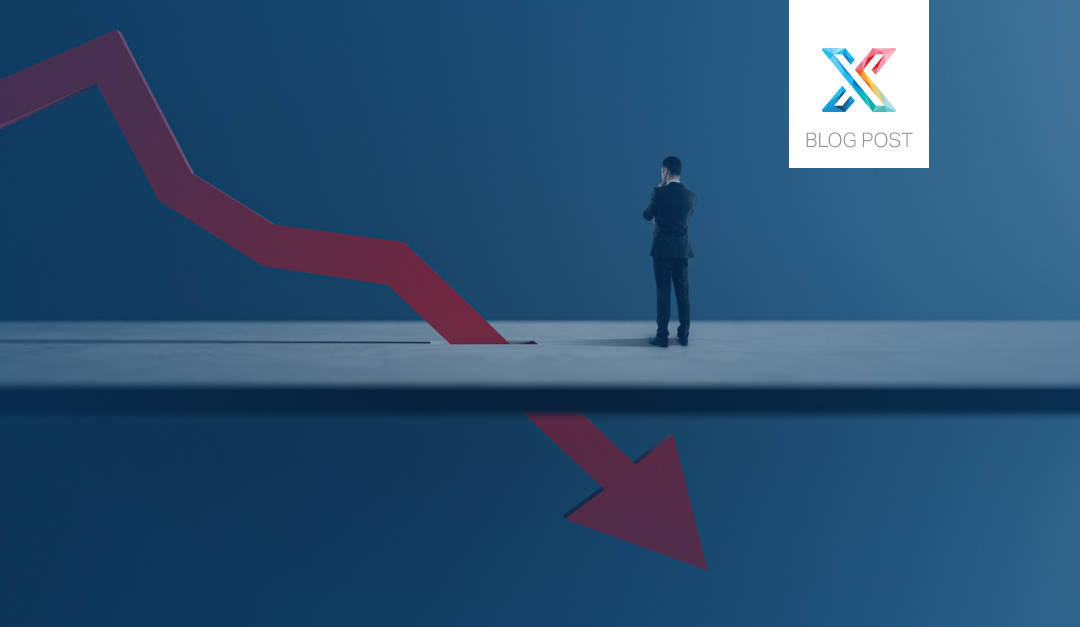Okay, I know what you are thinking or at least must be pondering: “Why are the thought leaders of Customer Experience Management in Professional Services saying our CX program is doomed to fail?” Or perhaps it’s: “Great! I just stared my customer experience management initiative as well as hired a CX professional in my firm and Client Savvy is saying it’s doomed to fail!” Don’t worry, take it easy, and hear me out! The truth is, a professional services CX program can absolutely fail if firms do not start taking a different approach with the way they manage their business, the way they operate, and the way they understand what drives success.
At the end of the day, architects, engineers, law firms, construction firms, and others are way behind the curve—some would even say decades behind other industries—in terms of the thinking and innovation for increasing loyalty and driving differentiation. Now is the time for firms to make a change and begin capitalizing on the opportunities that are out there to not only make everyone’s life easier, safer, and better, but to gobble up market share with the right clients!
To help firms identify roadblocks and pitfalls for a successful and sustainable CX program, we’ve developed a list of 11 reasons firms fail to capitalize on customer experience and things for you to look out for as a leader or contributor in your firm.
1. Lack of Leadership Buy-In for Customer Experience
Without visible support from top leadership, customer experience initiatives may not receive the necessary resources, attention, or prioritization within the organization to make it successful. Some of the top firms’ leadership say things regularly like, “We are a customer experience firm that just happens to be an engineer.” That’s STRONG!
2. Misalignment with Business Goals
Customer Experience programs may fail if they are not closely aligned with the broader strategic objectives of the professional services firm. If the goals of CX programs do not directly contribute to the company’s overall success, it can be viewed as a “side project” or “just another thing” rather than a critical business function. Too often, firms and their teams, have no idea why they are doing this, just that they need to.
3. Inadequate Employee Training and Engagement
Frontline employees play a crucial role in delivering exceptional customer experiences. If they are not adequately trained, motivated, or engaged, they may fail to meet customer expectations, leading to a poor overall experience. Many other issues arise from this too. For example, brand loyalty resides with individuals rather than the company itself. Now, with such high employee attrition rates in professional services this creates a high risk of revenue flight when a staff member leaves the firm.
4. Lack of a (Truly) Customer-Centric Culture
A customer centric culture is essential for the success of any customer experience program. If employees do not prioritize customer needs or if their organizational culture does not emphasize customer satisfaction, it can undermine the effectiveness of a CX initiative. As an example, are you getting customer feedback at a scale in your firm? Are you making changes or doing things based off customer feedback? No? More to come.
5. Failure to Act on Feedback
First you must be asking for feedback otherwise you may have a CX program without the “C” or the most important part, the customer. Gathering customer feedback is essential, but it’s equally important to act on that feedback promptly. If professional services firms fail to address issues raised by their customers or make meaningful improvements based on feedback, it can/will erode trust and satisfaction. That erosion in a vicious cycle also erodes your bottom line.
6. Insufficient Data and Analytics
Without access to relevant data and analytics, professional services firms may struggle to understand their customers’ needs, preferences, and pain points. This can hinder their ability to tailor services and experiences to meet customer expectations effectively! The right data and analytics will allow you to be much more strategic with your pursuits, growth into new verticals or markets, price your services correctly, etc.
7. Complexity of Service Offerings
Professional service firms often involve complex offerings and processes. If firms fail to simplify and streamline these offerings to make them more understandable and accessible to customers, it can lead to confusion, frustration, and poor customer experience. Remember, CX is about making our customers’ and employees’ lives easier, safer, and better.
8. Lack of Innovation and Adaptation
Customer expectations are constantly evolving, which are driven by changes in technology, industry trends, and competitive dynamics. If firms fail to innovate and adapt their offerings to meet these changing expectations, they risk falling behind and delivering subpar experiences. Ask yourself this: how did your customers’ expectations, needs, and wants change when Covid reared it’s head? How long did it take you and your firm to adapt? Did you focus inward on your firm, or outward on the client? Now, answer those questions honestly.
9. Ineffective Communication
This never happens, right? Clear and transparent communication is essential for delivering a positive customer experience. If professional services firms fail to communicate effectively with their clients, or prospective customers regarding expectations, timelines, costs, and deliverables it can lead to misunderstanding and dissatisfaction. Often, firms represent themselves one way, and deliver another during the business development process as an example.
Here is a question for you, does your team always paint the perfect picture of how an engagement is going to go? If so, why? In professional services there is no such thing as a perfect project or matter unless there is a project or matter that you get paid for which never happens! After doing thousands of customer interviews and millions of surveys, it is clear that your clients want you to tell the truth about the best case, the if’s, and the worst case so they can be prepared and not have their experiences impacted negatively. This is just one example of communication failure in professional services.
10. Overemphasis on Metrics
While metrics are important for measuring the effectiveness of customer experience initiatives, an overemphasis on metrics alone can be detrimental. Focusing solely on metrics like NPS (Net Promoter Score) or CSAT (Customer Satisfaction Score) without considering the underlying factors driving customer satisfaction can lead to misguided strategies and missed opportunities for improvement. Those improvements are what cause better outcomes for your firm!
11. Check the Box Mentality
Now for my favorite of the 11, and probably the most prominent for all firms in many of their initiatives. As an example, marketing. It’s not uncommon to see a 500-person engineering firm with one marketer, maybe even a CMO, whose sole responsibility is to write proposals and not actually “do marketing.” It’s almost as if they have someone in marketing because they have to but do not leverage the function as it is intended to be in every other industry. Another example is strategic planning that is done every few years. I’m willing to bet that if you are in professional services, you have been a part of a strategic planning effort that was useless and a waste of time. You and leadership got together for a few days, put a bunch of notes on paper and then…did NOTHING with it. Thus, number 11.
A check the box mentality refers to a mindset or approach where individuals or organizations focus solely on meeting the minimum requirements or fulfilling certain formalities without genuinely engaging with or committing to the underlying principles or objectives. In the context of customer experience programs for professional services, the “check the box” mentality might manifest in several ways:
Compliance over Commitment
Instead of truly prioritizing customer satisfaction and loyalty, the organization may focus on meeting basic standards or complying with industry regulations without investing in meaningful improvements to the customer experience.
Superficial Implementation
The organization may implement customer experience initiatives in a superficial or tokenistic manner, merely going through the motions without making a sincere effort to understand customer needs or address underlying issues. This reminds me of the new and upcoming “We are Customer Experience Led” and “We hired a CXO” in professional services. However, are you really? Did you really?
Lack of Follow Through
The firm may collect feedback from customers or conduct surveys but fail to take intentional and meaningful action based on the insights and wisdom gained. Instead of using feedback to drive continuous improvement, they may simply check off the box of having conducted surveys or collected data. Even worse, they didn’t like what they heard?
Short-Term Focus
An organization may prioritize short term gains or quick fixes over long-term strategies for building lasting relationships with customers. This could invoice implementing temporary solutions to address immediate concerns without addressing systemic issues that impact overall customer experience.
Disconnected from values
The firm may lose sight of its core values or mission, treating customer experience initiatives as isolated tasks rather than integral components of its broader commitment to serving customers and delivering value.
Change Your Firm’s Mindset and Approach to CX
In closing, the “check the box mentality” and all of the other root causes mentioned above can undermine the effectiveness of customer experience programs by limiting their impact, diminishing customer trust and loyalty, and failing to drive genuine improvements in the customer experience. It’s essential for organizations to move beyond this mentality and surface level thinking while adopting a more proactive, customer-centric approach to delivering exceptional experiences that your clients want to repeat!





